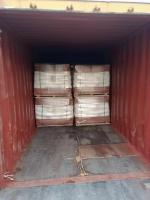Our Products
Polyacrylamide / cationic polyacrylamide of Praestol K111l K122L K133L can be replaced by Chinafloc C series


cationic polyacrylamide of Praestol K111l K122L K133L can be replaced by Chinafloc C series
Praestol K111l K122L K133L are three cationic polyacrylamide with high charge and high molecular weight ,can be used for water treatment and sludge dewatering ,Chinafloc C medium and high charge of cationic polyacrylamide can replace of them with good performance.
Cationic flocculants, particularly cationic polyacrylamide, play a pivotal role in numerous industrial and environmental processes. Their primary application is in water treatment, where they aid in clarifying water by facilitating the aggregation of suspended solids, which can then be removed more easily. This essay will delve deeply into the use of cationic flocculants in water treatment, detailing their mechanism, effectiveness, and additional applications in various industrial processes such as sludge dewatering, oil recovery, paper manufacturing, and more.
Water treatment is the foremost application of cationic flocculants. In this context, cationic flocculants are utilized to improve the efficiency of water purification by promoting the coagulation and settling of suspended particles.
Cationic flocculants work by neutralizing the negative charge on particles present in water. These particles are often responsible for turbidity and contamination. Once the charge is neutralized, the particles clump together into larger aggregates known as flocs. The cationic flocculants, by virtue of their positive charge, are particularly effective in binding with negatively charged particles, including organic materials and some metals.
In a typical water treatment scenario, cationic flocculants are introduced during the treatment process to facilitate the aggregation of particles. This can occur in various stages, depending on the specific requirements of the treatment facility. In municipal settings, cationic flocculants are crucial for both drinking water treatment and wastewater treatment, ensuring that water meets safety standards before it is released back into the environment or delivered to consumers.
Cationic flocculants are also extensively used in industrial water treatment processes. Industries such as mining, textiles, and food processing generate wastewater that contains a variety of contaminants. Cationic flocculants help in effectively reducing these contaminants, thus preventing potential environmental damage.
The use of cationic flocculants in water treatment offers several benefits:
Beyond water treatment, cationic flocculants are indispensable in sludge dewatering—an essential process in the management of the by-products of water treatment.
Sludge dewatering involves the removal of water from sludge to reduce its volume and weight, facilitating easier and less costly disposal. Cationic flocculants are added to the sludge to improve the separation of water from the solid components. The cationic nature of the flocculant promotes effective aggregation of the solid particles, enhancing the dewatering process.
The use of cationic flocculants in sludge dewatering provides substantial benefits:
In the oil industry, cationic flocculants are used to enhance oil recovery processes. They improve the displacement of oil in reservoirs by modifying the properties of the water injected into the oil field.
In paper manufacturing, cationic flocculants serve as retention aids and strength enhancers. They help in the binding of fines and fillers to the fibers, improving paper quality and reducing waste.


